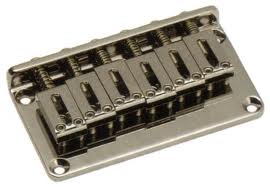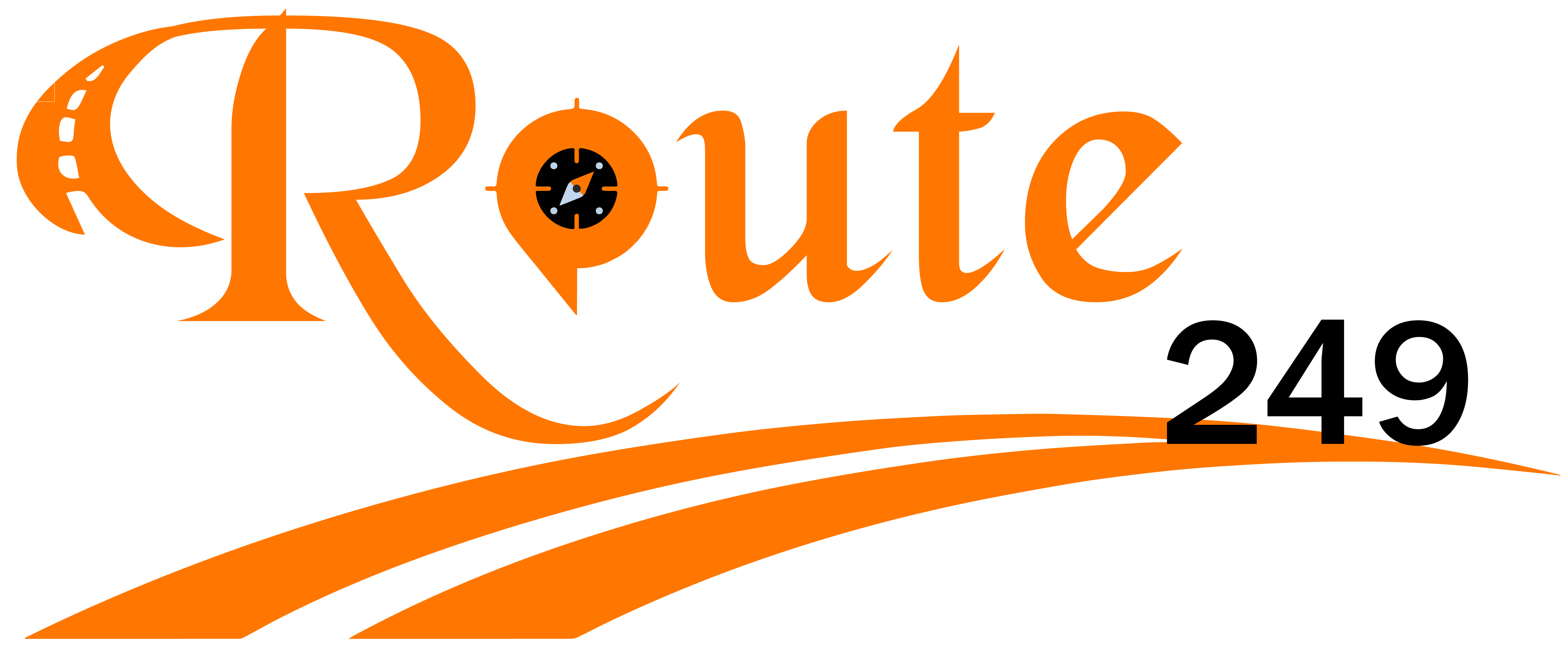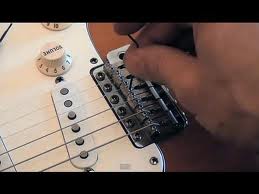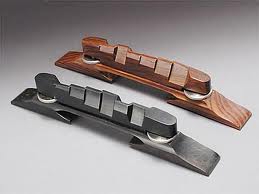The bridge ( sometimes called the saddle ), is not only adjusted for height, but also to level the bridge with the neck.
But before we get into the differences in adjusting them, first let’s discuss what we are trying to achieve.
I will start by giving you the manufacturer’s suggestions on the height of the strings. One dimension is for the 6th string (or bass string) and the other is for the 1st string (or treble string).
Gibson Guitars:
Their measurement is taken at the 12th fret and is measured from the top of the fret to the bottom of the string. You can use a ruler to measure it.
Bass String 5/64″ Treble String 3/64″
Fender Guitars:
Their measurement is taken at the 14th fret and is measured from the top of the fret to the bottom of the string. You can use a ruler to measure it.
Neck Radius Bass String Treble String
7.25″ 5/64″ 4/64″ (or 1/16″)
9.5″ – 12″ 4/64″ (or 1/16″) 4/64″ (or 1/16″)
15″ – 17″ 4/64″ (or 1/16″) 3/64″
Remember that this is their recommendations and since all of us are different, I feel it is a good starting point, but don’t assume that this is the only place it can be. If you feel like you want it a little higher or lower, by all means, try it. How else are you going to know what feels best to you? However, they have that standard for a reason. I do feel you should start there and see before you just start trying something else.
There are a lot of different types of bridges. I am not going to discuss all the types, but I am going to discuss the basic types.
Acoustic Guitars:
Almost all acoustic guitars have a fixed bridge. This being a thin piece of plastic. The reason that this style of bridge is so popular on acoustic guitars is because it is the vibration of the bridge against the body of the guitar that makes the sound. Unlike electric guitars that use pickups to relay the string’s vibrations.
These bridges may be straight or compensated. The difference being whether they are a straight piece or not. The reason that they aren’t straight is to try to compensate for intonation (which we will discuss in another lesson). This type of bridge is adjusted by taking them out of the guitar and sanding the bottom of the bridge to lower the action, or shimming it up (by placing a piece of paper or cardboard under it) to raise the action.
There is also this style of bridge which is adjusted with a thumb screw to adjust the height on both sides of the bridge. This makes adjusting the height easier, but by the nature of the mechanism, some of the vibration is lost and therefore tends to be a quieter guitar.
Electric Guitars:
Electric guitars incorporate all sorts of bridges. Different manufacturers patent their own style and many are unique and elaborate.
Others are more common.
The bridges are sometimes adjusted by thumb screws on each side (like the one directly above), and others use screws to adjust each individual saddle (like the one below).
 When you adjust the individual saddles, you should adjust the height of the bass string and the treble string first. Then take the neck’s arch into consideration to connect the two. Some necks are very flat from bass to treble sides while others are domed. Follow the flow of the guitar and it will feel more natural as you play it.
When you adjust the individual saddles, you should adjust the height of the bass string and the treble string first. Then take the neck’s arch into consideration to connect the two. Some necks are very flat from bass to treble sides while others are domed. Follow the flow of the guitar and it will feel more natural as you play it.
Next, let’s go on to Adjusting the Intonation.










10 Comments
You’ve made some good points there. I looked on the web to find out more about the issue and found most people will go along with your views on this site.
Thanks for posting this.. It’s been a pleasure to read 🙂
Very nice job
Nice job
Thanks really significantly for offering these helpful-hint stories.
No, basses can have 4, 5, 6, 7, 8, 9, 12, or more stgnris (7 s, 9 s and other expanded scale basses are very uncommon though, and 8 s and 12 s with smaller octave stgnris are also very uncommon less common than 12 string guitars, I’d say).Seriously though, this is the 6th time you’ve posted this same question, even though you’ve received a lot of good answers in your other topics = please, you don’t need to spam your question. Don’t mean to sound rude or anything, but it doesn’t really help you get an answer any faster.Look up these basses; they’re all very good instruments there is no best bass, it depends a lot on personal preference.Ibanez SR506, SR706, BTB576, BTB1306E (SR very nicely priced, BTB is more expensive)MusicMan Bongo 6 (VERY good bass, pretty pricey though)Warwick Thumb NT 6 (Another excellent bass, but fairly expensive)Schecter Custom 6, Stiletto Studio 6 (Like the Ibanez SR; good value, good price)Peavey Grind 6 (Another solid instrument that won’t cost too much)I hope that helps, and hope you find what you’re looking for. But you really don’t have to keep posting this question over and over, cuz you’ve already gotten a lot of good answers.Cheers!
Greetings, super job, I really must express gratitude!
I would like to thnkx for the efforts you’ve put in writing this site. I’m hoping the same high-grade site post from you in the upcoming as well. In fact your creative writing skills has encouraged me to get my own site now. Actually the blogging is spreading its wings quickly. Your write up is a great example of it.
Hello! I just would like to give a huge thumbs up for the great info you have here on this post. I will be coming back to your blog for more soon.
Hi, i think that i saw you visited my website thus i came to “return the favor”.I’m attempting to find things to enhance my web site!I suppose its ok to use a few of your ideas!!